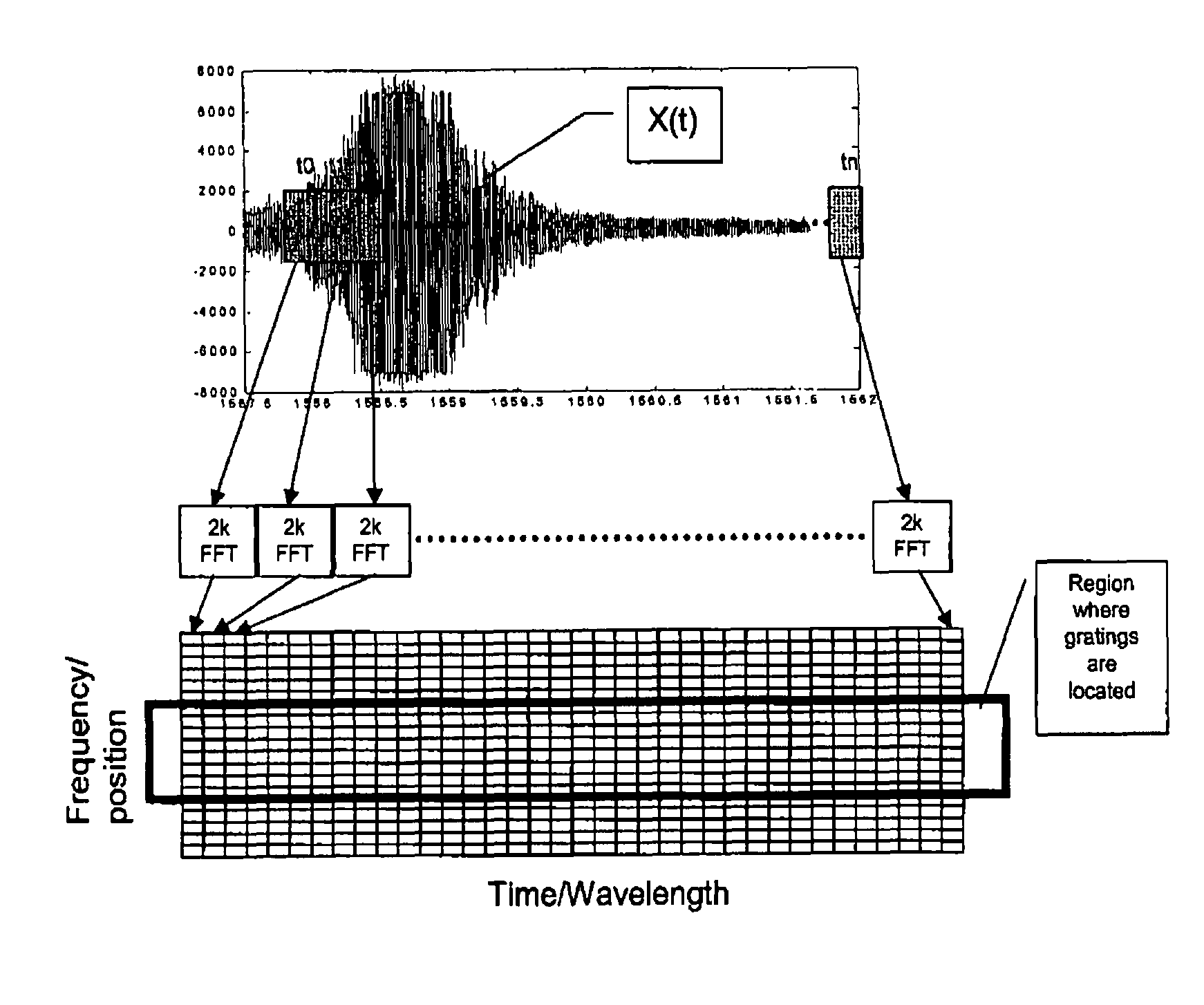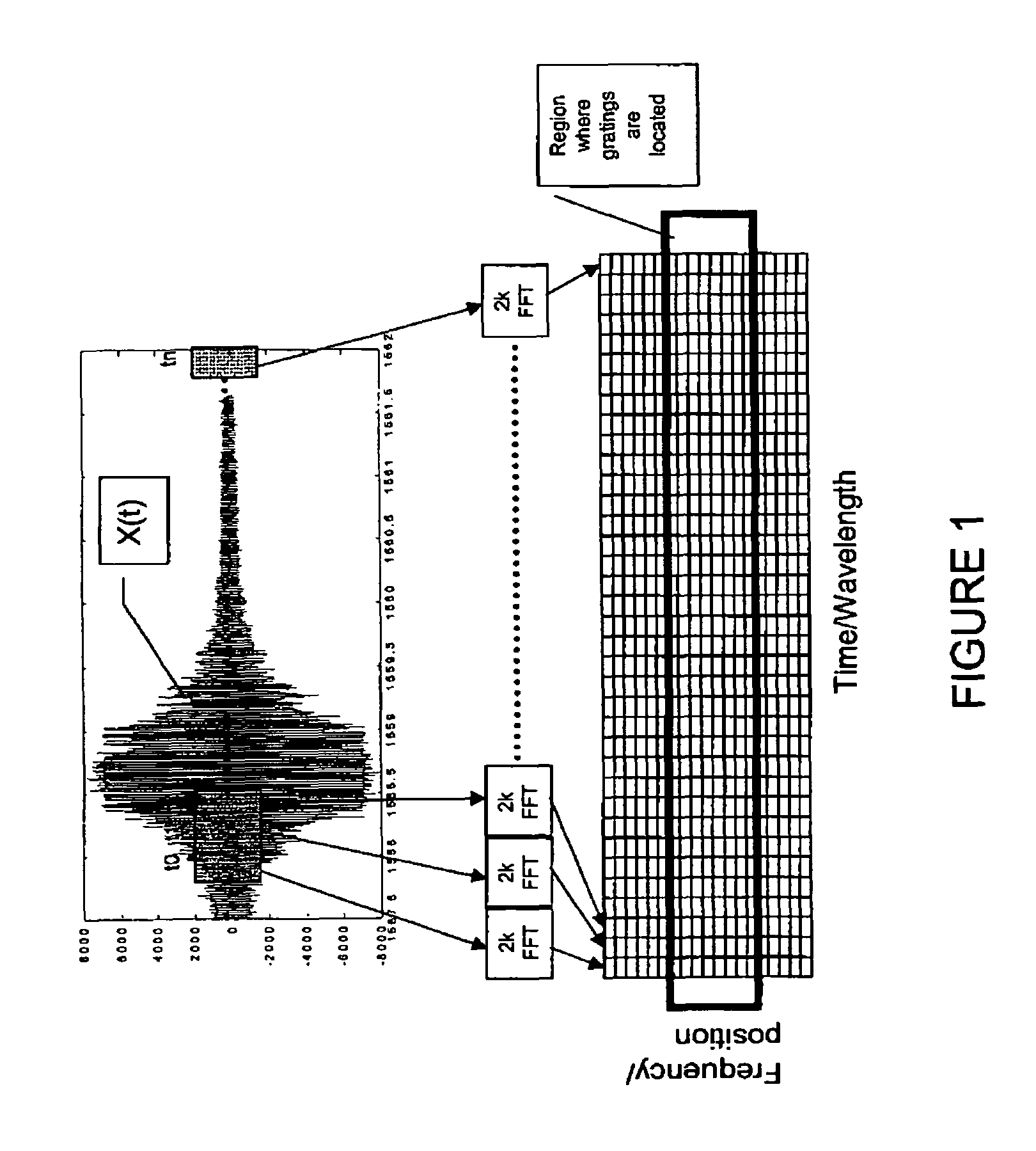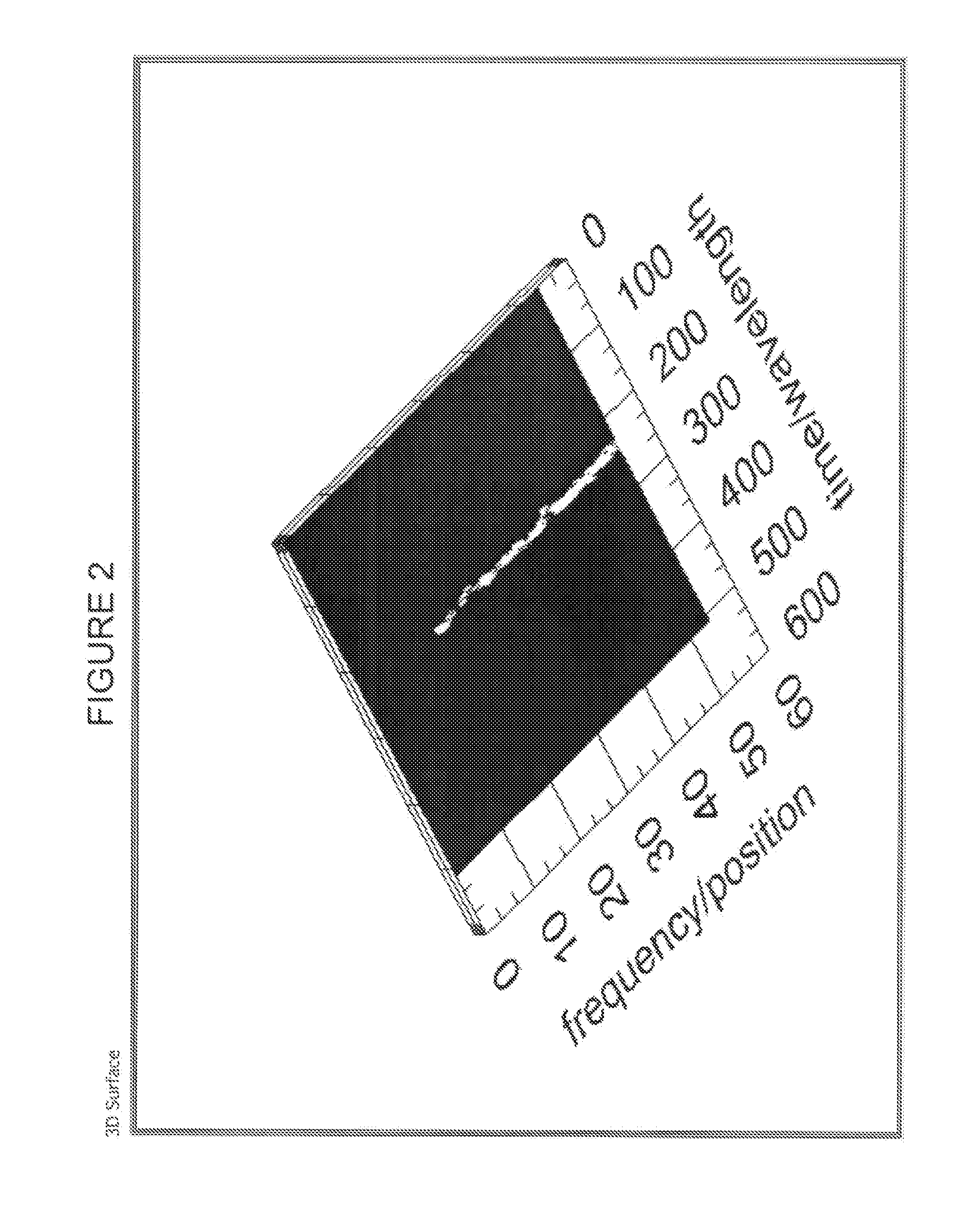Method for reducing the refresh rate of Fiber Bragg Grating sensors
a technology of fiber bragg grating and sensor, applied in the field of improving sensors, can solve problems such as and achieve the effects of increasing the interrogation refresh rate of fgb sensors, increasing the interrogation refresh rate of fob sensors, and increasing the speed of processing information
- Summary
- Abstract
- Description
- Claims
- Application Information
AI Technical Summary
Benefits of technology
Problems solved by technology
Method used
Image
Examples
Embodiment Construction
[0017]FBG sensors operate under the principle that a change in strain or temperature alters the sensor grating spacing which shifts the reflected wavelength proportionally. To measure wavelength shifts that result directly from changes in temperature or strain, OFDR FBG sensor systems must include a light source that continuously interrogates the reflection spectrum and a detection module that records the shifts in the peak reflectivity versus wavelength.
[0018]The interrogation refresh rate for OFDR FBG sensor systems depend on the speed of the optical source, the bandwidth of the detectors, the data acquisition rate, and the rate at which the analysis of the wavelength shift can be performed. Due to the latter factor, the rate at which the analysis of the wavelength shift can be performed, current OFDR FBG sensor systems cannot effectively be employed for in situ aerospace systems. This is due to the fact that current OFDR FBG sensor systems have a refresh rate of about 1 scan per ...
PUM
| Property | Measurement | Unit |
|---|---|---|
| wavelength Optical Frequency Domain Reflectometry | aaaaa | aaaaa |
| time period | aaaaa | aaaaa |
| time | aaaaa | aaaaa |
Abstract
Description
Claims
Application Information
 Login to View More
Login to View More - R&D
- Intellectual Property
- Life Sciences
- Materials
- Tech Scout
- Unparalleled Data Quality
- Higher Quality Content
- 60% Fewer Hallucinations
Browse by: Latest US Patents, China's latest patents, Technical Efficacy Thesaurus, Application Domain, Technology Topic, Popular Technical Reports.
© 2025 PatSnap. All rights reserved.Legal|Privacy policy|Modern Slavery Act Transparency Statement|Sitemap|About US| Contact US: help@patsnap.com



